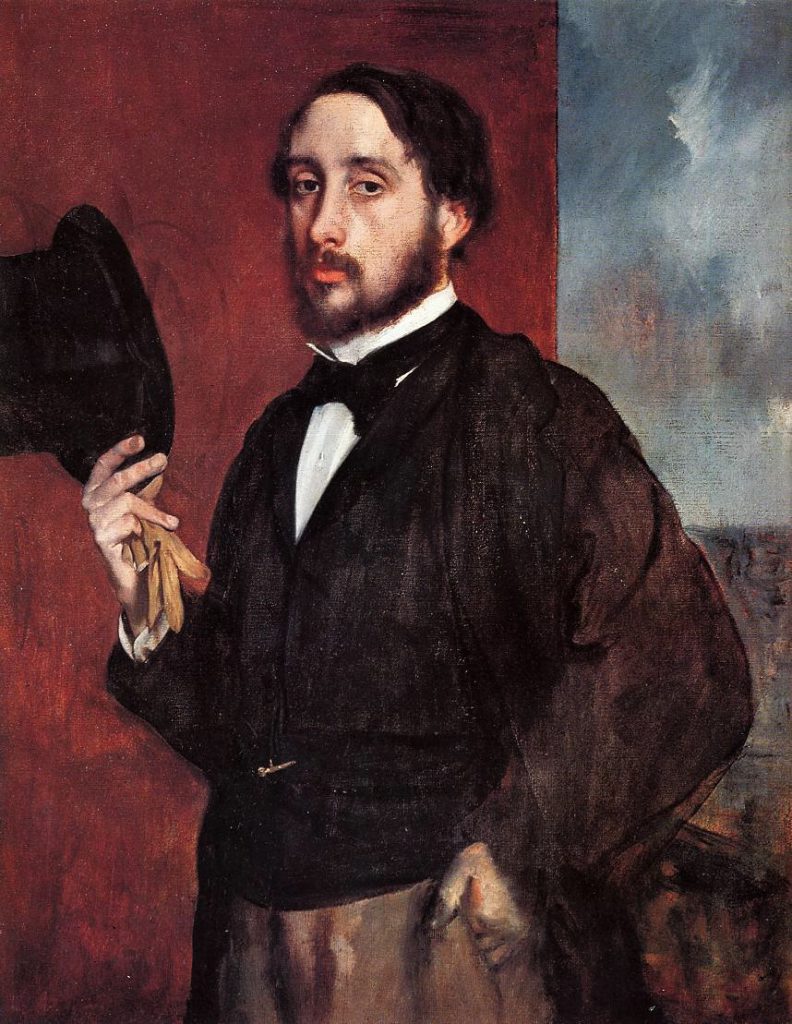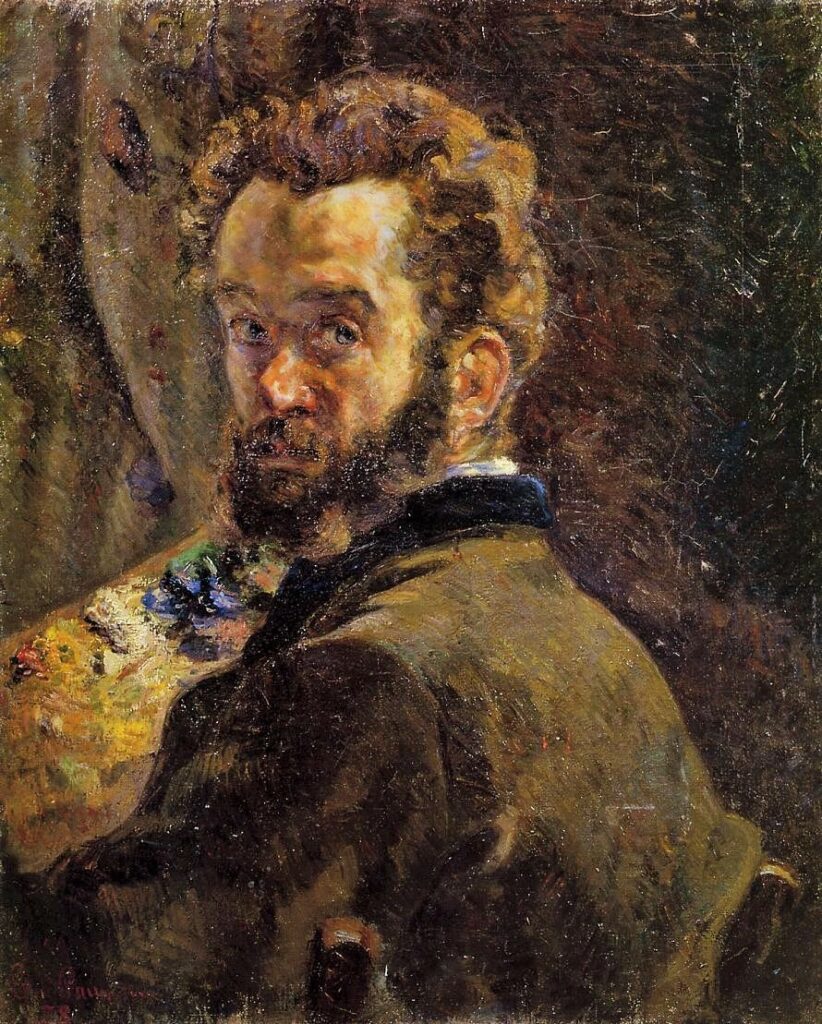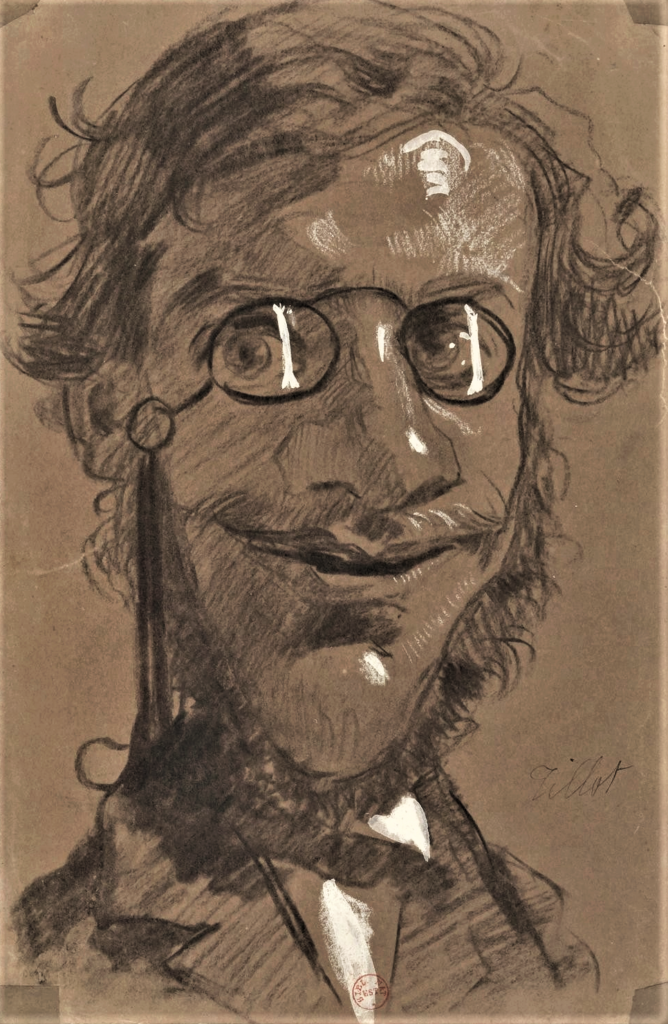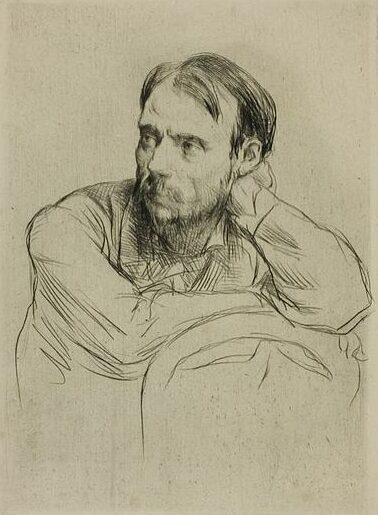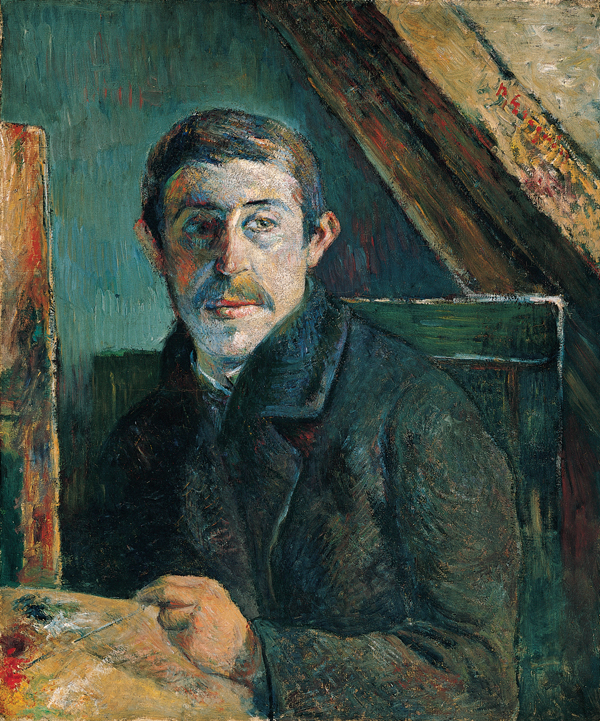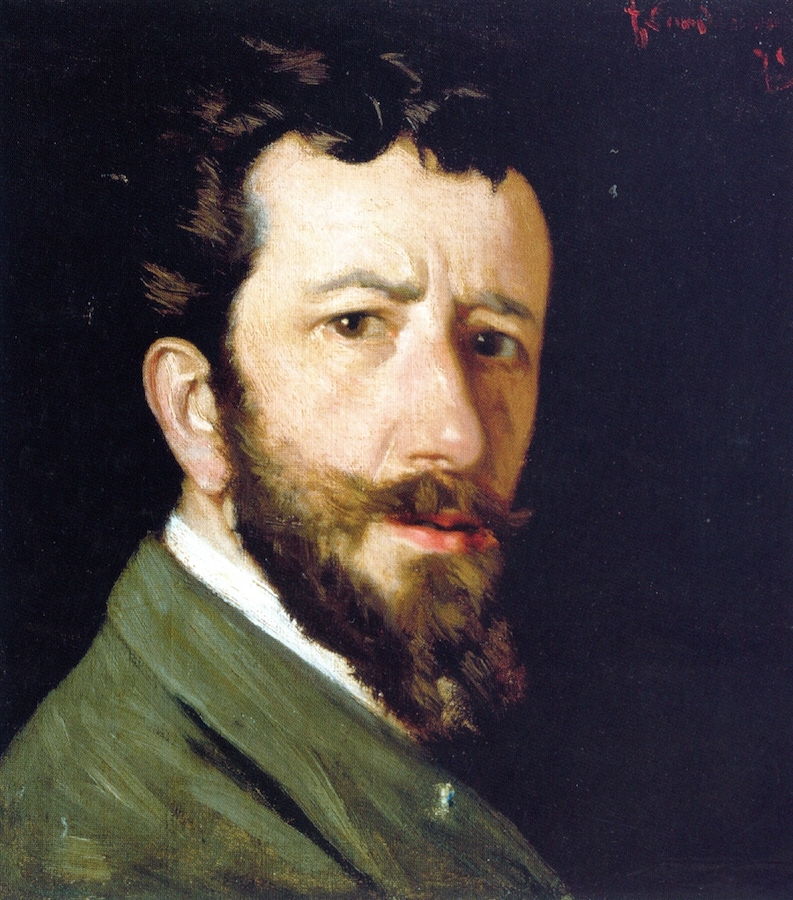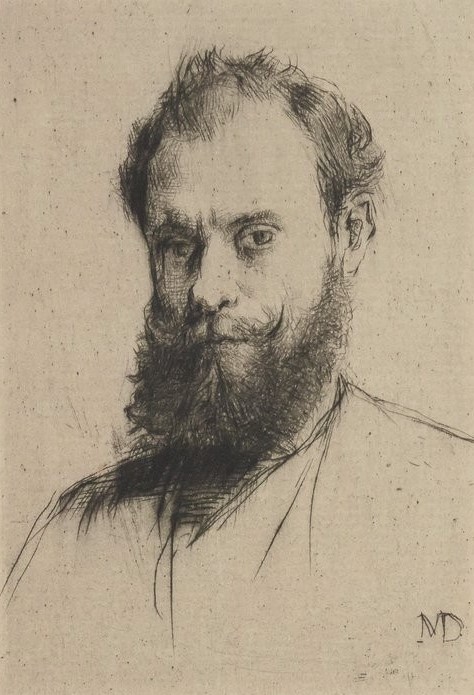Impressionism, a historical reconstruction:
Who were the main Impressionists?
Introduction:
Were all the 57 partakers of the 8 ‘impressionist’ expositions Impressionists? This question is answered on the main pages concerning these artists (see the left or bottom menu). The answer depends on whether you see Impressionism as a painting style or as an art-movement. I mainly see Impressionism as a painting style and you will find my prelimanary conclusions at the bottom of this page.
But, how was this judged by the partakers themselves and by the art-critics and the art-dealers? Who were included in (international) expositions that were called “impressionist”? You will find (in the future) the answers on this page. But first we will look how often a partaker of the ‘impressionist’ expositions and who were the Key-Impressionist according to Duret.
I will use green when an artist is seen as impressionist and red when he is not and orange when it is something in between.
How often did the partakers join?
Let us first use the criteria that the more often a partaker joined the 8 ‘impressionist’ expositions, how more the artist can be seen as ‘impressionist’ (in the sense of belonging to the ‘impressionist’ art-movement). We will include the 6 artists that joined 6x or more, we will exclude the 37! artists that joined just 1x or 2x. The judgement on the 14 other partakers we will leave undecided.
Note 1: this includes lesser known artists like Rouart, Guillaumin and Tillot.
Note 2: this excludes Paul Cézanne, who is extensively mentioned in sources on Impressionism.
Note 3: the well known Key-Impressionists Monet, Renoir and Sisley are not included.
8x: Pissarro.
7x: Degas, Morisot, Rouart.
6x: Guillaumin, Tillot.
5x: Caillebotte, Cals, Gauguin, Monet.
4x: Cassatt, Forain, Levert, Renoir, Sisley, Vignon, Zandomeneghi.
3x: Marie Bracquemond; Félix Bracquemond, ‘Jacques François =!? Comtesse de Rambure.
2x: Béliard, Bureau, Cézanne, Lebourg, Lepic, Léon Ottin, Piette, Jean-François Raffaëlli, Eugène Vidal.
1x in 1874: Astruc, Attendu, Boudin, Brandon, Colin, Debras, Latouche, Lépine, ‘Comtesse de Luchaire’, Meyer, de Molins, Mulot-Durivage, de Nittis, Auguste Ottin, Robert.
1x in 1876-1880: Cordey (1877), Desboutin (1876), Franc Lamy (1877), Legros (1876), Maureau (1877), Jean-Baptiste Millet (1876), Somm (1879), Jean-Marius Raffaëlli (1880)
1x in 1886: Lucien Pissarro, Redon, Schuffenecker, Seurat, Signac.
Key-Impressionists:
In his small book ‘Les peintres impressionnistes; Claude Monet, Sisley, C. Pissarro, Renoir, Berthe Morisot‘ published in 1878 Théodore Duret mentioned just 5 Impressionists. I will call them the Key-Impressionists. In a revised edition ‘Histoire des peintres impressionnistes: Pissarro, Claude Monet, Sisley, Renoir, Berthe Morisot, Cézanne, Guillaumin’ published in 1906, he would add two more, namely Cézanne and Guillaumin.
Note: All of them, except Cézanne, often used (elements of) the Impressionist painting style. Cézanne did so (partly) during a smaller period and best can be seen as an Post-Impressionist.
- Claude Monet.
- Berthe Morisot.
- Camille Pissarro.
- Auguste Renoir.
- Alfred Sisley.
- Paul Cézanne.
- Armand Guillaumin.
Against the Realists of Degas:
Several partakers of the 8 ‘impressionist’ expositions were excluded by other partakers, because they were called ‘realists‘.
In a letter to Pissarro (1881/01/24) Caillebotte divided two groups:
1. ‘you (=Pissarro), Monet, Renoir, Sisley, Mlle Morisot, Mlle Cassatt, Cézanne, Guillaumin, when you want Gauguin, maybe Cordey and myself (=Caillebotte)’
and 2. the fighters of realism: Degas, Raffaëlli, Lepic, Legros, Mme de Rambure, Moreau (=Maureau), Zandomeneghi, Bracquemond, Mme Bracquemond, Vidal (R102,p275).
Note 1: Caillebotte didn’t describe ‘we’ as ‘impressionists’.
Note 2: Caillebotte acknowledges that Degas had ‘an enormous talent’ and found it ok when he joined a next exposition. He also mentions Rouart and Tillot have this right (R102,p276)
Note 3: Caillebotte left out Cals and Piette who had already died and also Forain, Lebourg, Levert, Rouart, Somm, Tillot and Vignon.
Pissarro reacted (1881/01/27) that he can’t accept these propositions and he reminded Caillebotte that Degas had brought in Mlle Cassatt, Forain and Caillebotte himself (R102,p276).
In the preparations of the 8th ‘impressionist’ exposition Gauguin and Guillaumin pleaded an exposition without Raffaëlli (and others introduced by Degas).
Independant of the Salon:
It was Degas who emphasized the independence of the ‘impressionist’ expositions, by introducing (in 1879) the rule that those who submitted to the Salon, could not join the ‘impressionist’ expositions.
1878/03/25 there was a meeting at the gallery of Legrand preparing a new ‘impressionist’ exposition and discussing preconditions; Caillebotte, Cassatt, Degas, Desboutin, Guillaumin, Levert, Monet, Pissarro, Sisley, Tillot were invited; Morisot and Cézanne also, but were absent; Renoir having submitted to the Salon, was not invited (R2,p244/5).
In 1886 Félix Bracquemond was excluded by Degas becaused he submitted to the Salon.
The main Impressionists according to the Impressionists themselves:
Now you will find some short remarks of partakers of the 8 ‘impressionist’ expositions excluding or including other partakers.
- Monet opposed against Guillaumin, Gauguin and Vignon as partaker of the 7th ‘impressionist’ exposition in 1882 in which only 9 painters joined who extensively used an Impressionist painting style (R22I,p175).
- Renoir in 1882 was opposed to exhibit with Guillaumin, Gauguin and Pissarro, who had Socialist sympathies. (R2,p57)
- In 1886 Monet pleaded for a core group. Renoir for a selection based on talent, including Degas, Monet, Morisot, Pissarro, Sisley and himself (note he didn’t include Caillebotte).
- Renoir thought De Nittis‘ way of painting was to academic (R16;R1,p318).
Note: additional info will be added.
The main Impressionists according to the art-critics:
Now you will find some short remarks of art-critics on the partakers of the 8 ‘impressionist’ expositions excluding or including from being an “impressionist”. Note that their visions on what Impressionism is diver. Some refer more to a painting style others more to a broader art-movement of avant-garde artists. Some opposed to them, others supported them.
(For more info on the art-critics, see. )
- Manet was called by Chesneau (1874) ’the first in line’ (R2,p109).
- Emile Cardon (1874/04/29) reviewed: ‘The misters Brandon, Cals, de Molins, cannot without injustice be regarded as followers of the New School. We will therefore not deal here with them or their works, since we are sure to find them at the Champs-Elysées Palace or on rue Le Peletier. (R87,p263).
- Burty (1874/04/25) ‘The more moderate and no less valiant works of Messrs. Colin, Rouart, Boudin, Lépine, Ottin fils or de Nittis, the watercolours of Mr. Lepic, show how much is to be expected from this school. (R87,p262)
- Albert Wolff wrote in 1876 about ‘5 or 6 idiots, including a woman’ (which must be Morisot). Later on he names Pissarro, Degas and Renoir. (R19,p36)
- In his 38 paged pamphlet ‘La Nouvelle Peinture’ published 1876 Duranty judged the new art-movement (that he didn’t call ‘impressionist’) through Realist-glasses, influenced by Degas. In a 1878 copy sent to Martelli he wrote in the margins the names of the artists (R2,p37). Calling Manet as one of their leaders (R2,p46).
- In his 1878 publication Duret described the history of the ‘impressionist’ art-movement, pointing out Monet, Morisot, Pissarro, Renoir and Sisley as their main representatives. (R5,p109) And stressing landscape painting as the preferred and representative form of pure Impressionism (R2,p379).
Duret called the Barbizon painters naturalists, so did he call Rouart (and Cals), not being influenced by Japonism (R142,p31;R92,p24). - Duranty (1879) distinguishes between the Impressionists and the others. He wrote that the majority of the Impressionists had tried the Salon this year, leaving only three at the 4th ‘impressionist’ exposition: Caillebotte, Monet and Pissarro. (R2,p253). Who were ’the majority’? Renoir and Sisley for sure, probably Cézanne. Was Guillaumin one of them? Did he include Cordey and Franc Lamy? Morisot was absent, but not because she submitted to the Salon.
- Bertall (1880/04/07) thought the following partakers not worthy of the title indepent or impressionist: Marie and Félix Bracquemond, Lebourg, Rouart, Tillot and Vidal, in contrast with Forain and Guillaumin.
- Charles Ephrussi (1880) differentiated between the ‘radicals’ and those who had ‘emigrated’ from the Salon. He discerns between the work of the Impressionists and the colourless, dull work of the others (R2,p295). But did he add names to these groups?
- Duret (1882) called this exposition the best (R2,p373), because most paintings were devoted to landscape, colour and the open air in line with his 1878 publication (R2,p378/9; see above).
- The art-critic Fénéon (1884/04) included Forain in the ‘clan of impressionists’, also including Degas, de Nittis and Raffaëlli (R1,p478). Reviewing the 1886 exposition Fénéon only mentioned Morisot, Gauguin and Guillaumin as representing impressionism, not mentioning Forain (R90I,p441;R1,p533)
- In 1886 Bracquemond, Rouart, Tillot and Vignon were ignored (R2,p430).
Note: additional info will be added.
Who were no Impressionists according to the art-critics?:
Art-critics in their reviews often remarked that a partaker of the ‘impressionist’ expositions didn’t belong to the school of Impressionism / school of plein-air / the New School/ the Intransigeants / the radicals / etc. and was more suitable for exhibiting at the Salon. Sometimes they define Impressionism more a painting style others more to a broader art-movement of avant-garde artists. The following partakers received (more than once) such remarks:
(More info you will find on the main page of the artist.)
- Marie Bracquemond.
- Lepic.
- Lépine.
- Auguste de Molins.
- Jean-François Raffaëlli.
- Rouart.
- Tillot.
- Vidal.
Note: additional info will be added.
The main Impressionists according to the art-dealers:
(For more info on the art-dealers, see. )
- x
Note: additional info will be added.
Partakers of (international) “impressionist” expositions:
Apart from the 8 ‘impressionist’ expositions that were held in Paris from 1874-1886, there were some (international) expositons held that were explictly called “impressionist”. Who were the partakers? Who were (internationally) represented as being an impressionist?
- In 1900 at the Centennale of the Exposition Universelle there was a separate room for the Impressionist School including: Boudin, Degas, Monet, Pissarro, Renoir, Sisley, Tillot (wrongly written as Tillet), Vignon and also Manet and Maufra (Maxime, 1861-1918?) (R116I,p294).
Note: additional info will be added.
The main Impressionists according to later sources:
- Moffett, who selected and organised the 1986 centennial exposition, calls the works of Attendu, Béliard, Bureau, Cals, Colin, Cordey, Debras, Forain, Guillaumin, Lamy, Latouche, Lebourg, Lepic, Levert, Meyer, de Molins, Mulot-Durivage, Auguste and Léon Ottin, Raffaëlli, Léopold Robert, Somm, Tillot, Vidal, Vignon and others ‘inferior’, thus disqualifying 25 of the 57 partakers of the ‘impressionist’ expositions (R2,p22).
- x
Note: additional info will be added.
Conclusion:
Discerning who are the main impressionists, is one of the goals of this website. Here you will find some prelimary conclusions:
Monet, Morisot, Pissarro, Renoir and Sisley may be seen as the core group of Impressionists. This is in line with the first choice of Théodore Duret.
When we see Impressionism firstly as a painting style, we must also include Caillebotte, Guillaumin, Vignon, Lebourg, Lucien Pissarro and Cordey, who mainly used the impressionist painting style. The first two also had an important role in the ‘impressionist’ expositions and were more active within impressionist circles of friends. So, I like to include Caillebotte and Guillaumin in a second peel around the 5 Key-Impressionists. Vignon, Lebourg, Lucien Pissarro and Cordey, I like to include in a third peel.
When we see Impressionism as a broader avant-garde art-movement Degas surely must be added. But, he only to a limited extent used an impressionist painting style and called himself a Realist. So, in that sense I don’t see him as a main Impressionist.
Cassatt, Gauguin and Cézanne are surely part of this broader avant-garde art-movement. The first two also had a more active role within the ‘impressionist’ expositions; Cézanne only joined two times. They used elements of the impressionist painting style, but not consequently and/or just for a shorter period. Gauguin and Cézanne best can be seen as Post-Impressionists.
Rouart had a very important role within the ‘impressionist’ expositions. But, he used a more pre-impressionist painting style, so not very avant-garde. Till 1883 he merely was an engineer and industrialist and only an amateur painter. In that sense he was not a main Impressionist.
Though Tilot joined 6 of the 8 ‘impressionist’ expositions, he didn’t have an active role and he used a more pre-impressionist painting style. In that sense he was not a main Impressionist.
Many other partakers of the ‘impressionist’ expositions, partly used elements of impressionist painting style, but not in a consequent way.
Sources:
See the sources mentioned at the bottom of the pages that are linked to. For the general references see .
Recommanded citation: “Impressionism: a historical reconstruction: Who were the main Impressionists? Last modified 2025/09/08. https://www.impressionism.nl/main-impressionists/”
Note: additional info will be added.
Please be reluctant when you quote from this webpage, which is under construction.
The information is incomplete and maybe partly incorrect.


